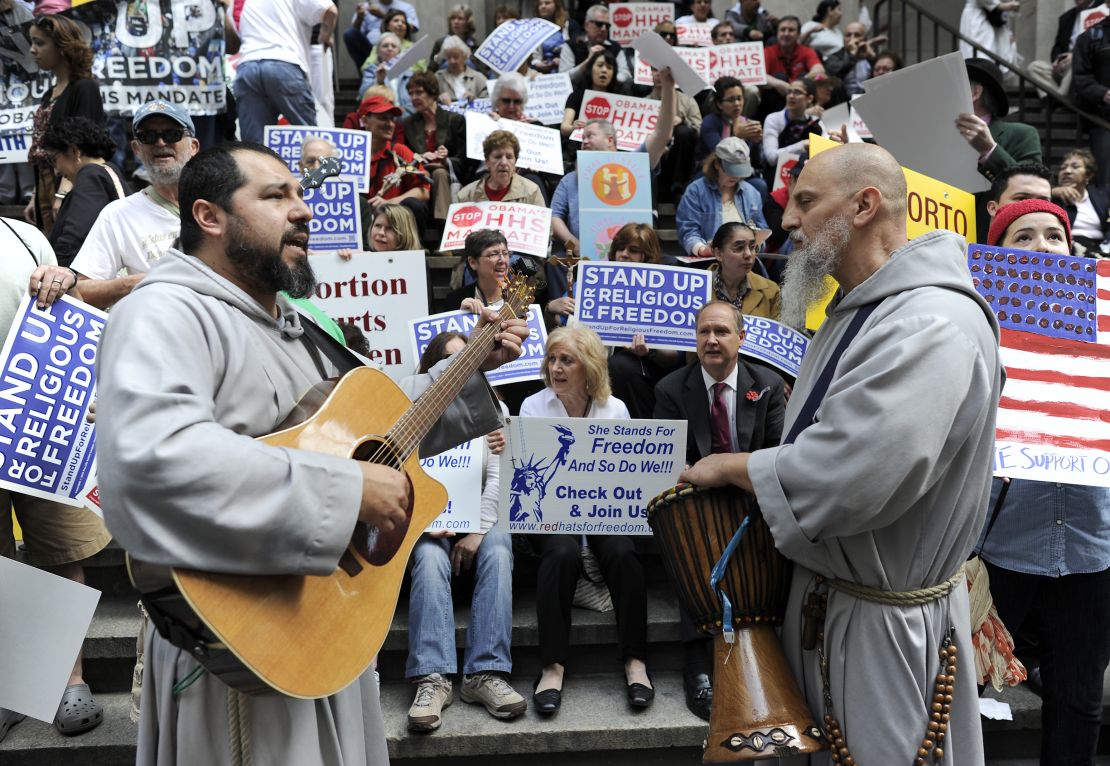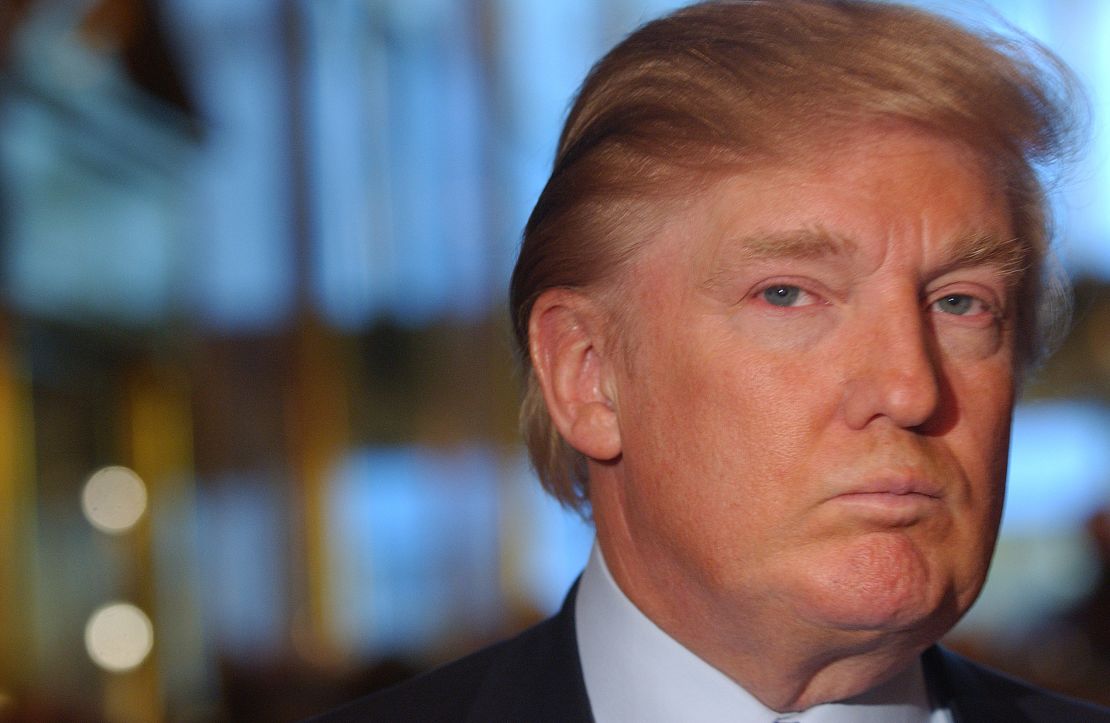“We do not see things as they are; we see things as we are.” – Anais Nin
Story highlights
A strain of mistrust has long run through American history
Historian traced the trend in 1964 essay, "The Paranoid Style in American Politics"
It's easy to think of such paranoia as fringe, but it's increasingly mainstream
Can we overcome our fears? Not in the current climate -- though maybe eventually
Ever have the feeling you’re being lied to by the news media, the authorities, the corporate world? That somebody – or something – is out to get you?
You’re not alone.
Welcome to 21st-century America.
Look around. Trust is hitting historic lows. Just a third of Americans have a favorable view of the federal government, a decline of 31% since 2002, according to the Pew Center for People and the Press. Gallup has Congress’ approval rating is in the low 20s, after nearing single digits last summer. And the news media aren’t much better off.
“Negative opinions about the performance of news organizations now equal or surpass all-time highs on nine of 12 core measures the Pew Research Center has been tracking since 1985,” a Pew report said.
Add in our wired, social media-addicted world, and rumors reign. You’ve heard them all, whether they involve the presidential candidates, global climate change or illegal immigration.
They’re our little open secrets. They give us the sense that we’re on to Them.
Opinion: What’s really at stake in election 2012
“It’s easier to be suspicious,” says Geoffrey Vaughan, a political science professor at Assumption College in Worcester, Massachusetts. “There is something attractive in thinking that you know something, that you haven’t bought into the mass public opinion.”
That attitude is nothing new. In a famous 1964 essay, “The Paranoid Style in American Politics,” historian Richard Hofstadter traced what he called “the paranoid style” through American history. What he found was that a fearful strain of mistrust flows through the blood of the republic, whether it was 18th-century religious leaders worried about the Illuminati, politicians suspicious of immigrants or McCarthyites convinced of Communist infiltration.
Hollywood has dined out on these feelings for years: “The Manchurian Candidate,” “The Parallax View,” “Wag the Dog,” the TV series “The X-Files,” even the James Coburn comedy “The President’s Analyst” – all are based on the idea that some kind of secret, malevolent operation is going on behind the curtain.
It’s as American as apple pie – filled with razor blades.
Sure, like the stories about those razor blade-tainted apples, there are sometimes bits of truth within. More often, however, the truth is overwhelmed by panic and hyperbole.
Which is a problem, because fear and mistrust have real-life implications, especially in an election year like this one, where it has seeped into the body politic like acid.
To 17% of Americans, President Obama is a Muslim – and 65% of that group are “uncomfortable” with that. It’s not enough for many opponents to disagree with the president on the issues; he has been characterized as a socialist and even the Antichrist.
Mitt Romney’s had his own problems. During the Republican primaries, he struggled to attract evangelical voters who considered his Mormonism a “cult.” (It wasn’t until mid-October that the Rev. Billy Graham’s organization decided to remove that designation from its website.)
This election year, in fact, has been one for the books. Facts, apparently, don’t matter anymore. Both campaigns have earned “pants-on-fire” ratings from the fact-checking site Politifact; both sides have blithely ignored them and moved forward. After the Romney campaign was called out for some falsehoods, pollster Neil Newhouse responded, “We’re not going to let our campaign be dictated by fact-checkers.”
Worse are the actual laws on the books based on some kind of perceived threat. Oklahoma banned courts from considering Islam’s Sharia law. (Oklahoma’s law has been temporarily blocked.) The Texas state Republican Party even created a platform opposing “critical thinking” in state schools, though a spokesperson was quick to point out that the platform regards “critical thinking” as another name for “outcome-based education” (which the platform criticizes as having “the purpose of challenging the student’s fixed beliefs and undermining parental authority”).
Paranoia isn’t on the fringe anymore, like it was in Hofstadter’s day. It’s now closer to the beating heart of the mainstream.
“The fringe has begun to blur with the base,” says John Avlon, author of “Wingnuts: How the Lunatic Fringe Is Hijacking America.” As the title of Avlon’s book indicates, he’s concerned about this. “That’s the key dynamic, and that’s the key danger.”
The bogeymen of a new generation
Avlon, a former speechwriter for New York Mayor Rudolph Giuliani and a contributor to the Daily Beast and CNN, observes that one reason Hofstadter’s essay remains valuable is that it shows that in “every generation, there are enthusiastic dupes who are getting sold the same old snake oil.”
In Hofstadter’s time, the ultra-right John Birch Society received attention for its claims of communist conspiracies and elitist cabals. In our time, says Avlon, conservative talk show hosts give voice to these claims. “These are dog-whistle echoes of very old arguments – arguments that have been thoroughly discredited by history.”

It’s not just right-wingers who engage in this talk, he adds. During the George W. Bush administration, some commentators on the left were afflicted with what Avlon, borrowing a term from columnist Charles Krauthammer, calls “Bush Derangement Syndrome.” Left-wing opponents of the president called for his impeachment and compared him to Hitler.
Regardless of who sponsors them, these arguments keep following us. Almost 50 years ago, Hofstadter chronicled a handful of overlapping paranoid fears – the belief in an elite conspiracy that wants to run the world, the concern that immigrants and members of other religions will displace “real” Americans, and the idea that a fifth column is working to bring down the United States from within.
Those fears continue to emerge today. It’s no wonder there are calls to “take our country back,” with the implication that “back” was a golden age before the world went to hell.
Yesterday’s paranoid types feared elite groups such as the Illuminati and the Masons. Today’s bogeymen include the members of the Rockefeller-founded Trilateral Commission and the politicians and financiers who attend the monied confab at Bohemian Grove and are suspected of mapping out the “new world order.”
Or consider immigration. In the 1850s, the nativist American Party (also known as the Know-Nothings) formed over fear of the new immigrants – Irish and German – coming to the United States, allegedly stealing jobs. Today, there’s Arizona SB 1070, nicknamed the “show me your papers” law. Though parts of the law were shot down by the U.S. Supreme Court, other states have used it as a model, and immigrant suspicion is routinely in play – especially along the southern border. This despite studies that have shown that immigrants don’t take jobs away from U.S. citizens.
Even suspicion of an internal coup remains. In the 1950s, we had the Red Scare; today there are people claiming the coming of Sharia law; rumors about Agenda 21, a United Nations development initiative that has inspired fears of world government; and the always reliable anti-Semitism, whether it concerns the “Zionist media,” blame for 9/11 or a belief that Israel is pulling the strings of the U.S. government.
For Hofstadter, the “Paranoid Style” was an extension of two decades of work that promoted reason over emotion and critiqued America’s fondness for an idealized, agrarian past, says his biographer, Elizabethtown College history professor David S. Brown. By the time he wrote the essay, the two-time Pulitzer Prize winner was convinced that all those pesky extremists were a thing of the past. But he was well aware that consensus was fragile.
As Derek Arnold, a Villanova communications professor, observes: “You can almost see him as pretty prescient.”
‘Leaving rationality behind’
It’s certainly easy to fall under the spell of paranoia. Since the dawn of mankind, we have been clannish and tribal animals, wary of others, fused by emotional connections. In the modern world we create tribes beyond blood – like sports fans or, well, political parties.
The danger is that many people don’t develop the rationality to tamp down the emotion, says Dr. David Reiss, a San Diego-based psychiatrist who studies personality dynamics.
“It’s not so much that they’re paranoid in a clinical sense, but if they feel their needs are going to be met – or they’re connecting with someone powerful – they’re basically leaving rationality behind,” he says.
Then there’s another deeply human element: the attraction of the story.
“If it’s something that’s interesting and grabs your attention, regardless of your background, it’s appealing,” says Villanova’s Arnold. He mentions the theories about the Mayan calendar predicting catastrophe. “Look at the end-of-the-world stories we’ve been getting this year.”
Though much of the focus these days is on right-wing paranoia, both sides, as they get more extreme, look at their opposition as the enemy and hold on more tightly to their own beliefs, says Jonathan Haidt, a professor of moral psychology at NYU and the author of the recently published “The Righteous Mind: Why Good People Are Divided by Politics and Religion.”
“Extremism on either side leads to very predictable patterns of thinking and usage of fact,” he says. “Morality binds and blinds. As long as you’re on a team, you’ll have your own set of values and facts.”

Extremists on both sides often take leaps beyond the logical. They indulge in hyperbole: for the left, the right is engaged in a “war on women”; the right has talked about the left waging a “war on religion.” (After the massacre in Aurora, Colorado, Texas Republican Rep. Louie Gohmert attributed the tragedy to “ongoing attacks on Judeo-Christian beliefs.”)
Why don’t believers follow logic? Again, the mind’s fascination with patterns and groupings is to blame, says Assumption’s Vaughn: We use shortcuts to make decisions, often dictated by our biases.
Add to that our tribal instincts, and shades of gray are reduced to a black-and-white world.
“It’s something you can understand,” he says. Those who don’t see things the same way, he continues, are the deluded ones.
Cashing in
Minnesota Rep. Keith Ellison, a Democrat and one of only two Muslims in Congress, has seen plenty of fear-mongering, whether it’s accusations that up to 81 members of the Congressional Progressive Caucus are communists or that Huma Abedin, a Hillary Clinton aide, has ties to the Muslim Brotherhood.
He believes the accusations are tied to both demagoguery and paranoia – “there are people who have an appetite for conspiracy” – but undergirding it is something even more elemental in politics: money.
“It is lucrative,” he says. “As long as there is a financial payoff, and it also happens to feed their paranoia and thirst for conspiracy, it’s going to keep going – until the American people just totally reject it.”
Avlon, the “Wingnuts” author, agrees.
“People who listen to partisan media don’t appreciate that what they have taken to be a tribe of true believers is nothing more than a business plan,” he says.
Indeed, there is good money in playing to your audience. the more the audience buys into it, the harder it is to dislodge their beliefs.

Writer Charles P. Pierce laid out the rules in his indispensable book “Idiot America”: “1. Any theory is valid if it sells books, soaks up ratings or otherwise moves units. 2. Anything can be true if someone says it loudly enough. 3. Fact is that which enough people believe (and) Truth is determined by how fervently you believe it.”
No wonder the so-called mainstream media has trust issues. In the search for ratings and Internet traffic, it gives voice to the same fearful hyperbole found elsewhere in society – and often plays it for entertainment value. (Witness the rise of Donald Trump, political pundit and almost-candidate, whose regular proclamations headline the New York tabloids and are then repeated throughout cable news.) It’s the classic case of preying on our insecurities, points out Ari Kohen, a political science professor at the University of Nebraska.
“Like those teases for the 10 o’clock news: ‘What household product might be making you sick? Tune in at 10!’ It’s the same idea,” he says.
Throw in the echo chamber of right- and left-wing websites, and these claims are even harder to escape, particularly in what’s been described as “the post-truth era.”
“It’s almost as if everybody’s creating his or her own reality at this point,” says John Carroll, a Boston University communications professor and regular media commentator. “They can essentially construct an information environment that’s so self-reinforcing, and so exclusionary, that they don’t really have to consider any evidence that contradicts what they already believe.”
‘We’re in the danger zone’
American history has not been kind to the conspiracists. In general it has fought off their claims, laughed at their theories.
But there have been times when the suspicious have had a point. As the old saying goes, just because you’re paranoid doesn’t mean they’re not out to get you.
After all, the Soviet Union did infiltrate some U.S. agencies, and Julius Rosenberg really did deliver classified information. The CIA was instrumental in a number of coups. The FBI’s COINTELPRO program spied on domestic groups. Watergate revealed a tangle of Nixonian malfeasance. A handful of climate scientists did try to clamp down on dissent. (Their opponents have also worked together.) Finance industry workers did cover up bad loans and, more recently, fix the LIBOR rate.
All are “clear evidence,” says Fordham University professor Bruce Andrews, who has taught courses on conspiracies and covert activity, “of actual organized groups doing things.”
The dark currents can give a person pause.
“One of the reasons conspiracy theories have proliferated over the last half century is that they have so often been proven correct,” says Assumption’s Vaughan.
It may never hurt to have a healthy dose of skepticism. But, a willingness to accept – or immerse oneself in – mistrust has been shown to weaken civic structure in other cultures. Russia and some countries in the Middle East have suffered from a lack of transparency, along with great divides between the haves and have-nots. Those cultures also have long histories of conspiracy-mongering and little trust in their governments.
The United States was intended to be different.
“America’s ability to question and, if necessary, change our government made such (conspiracy-minded) thoughts here against the grain,” says Villanova’s Arnold.
Despite our weakened faith in government and institutions, the country chugs along. But what of the future? “I wish I could be optimistic, but I really can’t,” says Reiss, the San Diego psychiatrist. “There’s so much power behind making things destructive. It’s really in the service and to the advantage of the politicians on both sides to keep people in a somewhat scared state.”
“(Consensus) is not dead, but we’re in the danger zone,” says Avlon. “There are real costs to hyperpartisanship. Most importantly it becomes ultimately a threat to self-governance – it’s stopping us from being able to solve the serious problems we face.”
“Righteous Mind” author Haidt, however, sees a reason for hope – though not immediately.
We’re stuck for probably the next five years, he says. After that, events could intercede. We could face economic collapse; we could have total victory by one party. But the most intriguing, he observes, is the passage of generations.
“We went from the Greatest Generation, which was the most civic-minded because they fought World War II together … to the baby boomers, who were the worst at working together because their foundational experience was splitting apart to fight the left-right battle,” says Haidt. “We’ll soon be moving on to the millennial generation, which is marked by a reluctance to make moral judgments.”
That has its own drawbacks, he adds, “but some tolerance and reluctance to judge might be just what we need in the 2020s.”
Until then, however, there will be no golden age of understanding, no rebirth of trust. No, for now, we’re stuck with the system we have, the noise it creates, and the voices in our heads.
Margin of error: Two candidates, two journeys, one race of lost dreams



